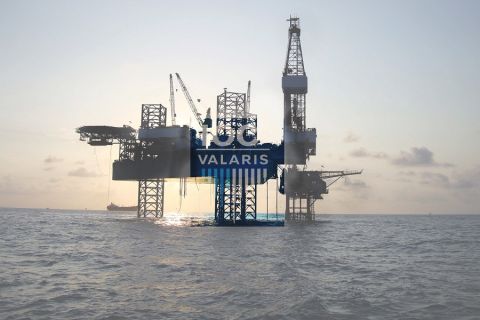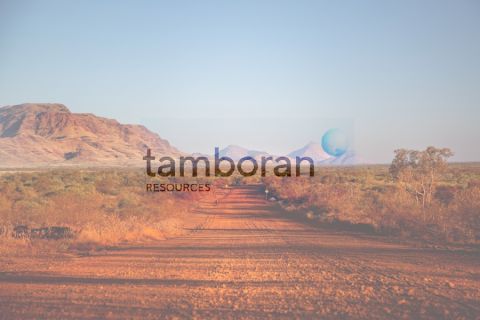Formation pressure plays a major role in all things related to drilling and producing oil and gas from within a reservoir. Downhole formation testers have long been a key component in a reservoir engineer’s analysis arsenal, but acquiring this data has grown more difficult as wellbore geometries have increased in complexity, such as S-shaped, short-radius and increasing horizontal lateral lengths.
Success in these wellbores has come through numerous advancements in directional drilling and LWD technologies. The recent development of LWD formation pressure testing tools is an important step in this evolution. Integration with the LWD platform provides a means of acquiring formation pressure data in wellbores where conventional methods or deployments are difficult or unsafe. The data are transmitted in real time and stored into memory, providing instant access to formation pressures and reducing uncertainties when needed.
Technical answers
LWD formation pressure testing tools present several unique environmental considerations when compared to other formation pressure testing tools. The LWD tools must operate at downhole conditions of temperature, pressure, shock and vibration that are typically encountered while drilling. This is difficult because, generally speaking, formation pressure testing tools are delicate, relying on quartz crystal pressure gauges and moving mechanical parts to provide the measurement.
Any formation pressure testing tool needs to operate autonomously as mud-pulse telemetry limitations prohibit any surface intervention. The level of sophistication required in sensors and controls challenges electronics developers to continually invent new algorithms. The LWD formation testing tools work in a hybrid world between drilling and formation evaluation, requiring high-quality data in minimal time.
The design of Weatherford’s PressureWave LWD formation pressure testing tool addresses these challenges in several ways. Data acquired by the tool are handled in real time while drilling via mud-pulse telemetry and recorded to high-resolution, 32-bit data memory. The onboard memory records formation pressure data along with key diagnostic information at much higher resolution and frequency than possible with real-time telemetry. At the surface the data are quickly processed to support decision-making.
The tool employs an electromechanical drawdown mechanism that is reliable and easier to maintain than complex hydraulic devices. It also has greater accuracy with precise stopping and locking for advanced analysis and repeatability through a range of temperatures and pressures. The tool’s seal-pad construction ensures accurate pressure data measurements in the mud-pulse telemetry environment of the LWD system, with a sealing efficiency of more than 95%.
A modular design consists of valve, pressure, pump and drawdown components. The concept simplifies and speeds replacement to reduce maintenance cycles and lower running costs. Modularity also allows pressure measurements to be custom-calibrated to further enhance accuracy. Operating parameters such as drawdown volume and pad pressure can be changed in response to formation variations to optimize measurement accuracy.
Experience with formation pressure tools
Globally, experience with the LWD formation tester has proven its utility in addressing a variety of well and reservoir requirements. These field operations clearly illustrate that the ability to make formation pressure measurements on demand while drilling validates the added LWD expense and exposure. At the same time, acquisition of high-quality data enables optimization of the completion and long-term production.
In Colombia, the combination of an LWD quad combo (resistivity, gamma ray, neutron porosity, formation density and sonic) and the LWD pressure tool provided key data in generating a real-time wellbore stability model. This allowed the customer to extend the drilling window of a long horizontal section safely and efficiently. The pore pressures measured by the LWD pressure tool ultimately validated the regional pore pressure model, enabling the customer to safely drill other wells in the same area.
A North Sea deployment resulted in seven pressure stations that confirmed the presence of a water leg inside the reservoir with a high degree of confidence. The resultant information was then used to validate the overall reservoir and regional pressure trends. The value of an LWD formation pressure measurement solution saved the customer additional rig time, resulting in a savings of more than $1.5 million.
Difficult hole conditions in Ecuador were causing premature cancellation, or worse, lost-in-hole events during formation pressure runs. Typically, the formations that were being drilled were overlain by a severely depleted section that commonly resulted in expensive fishing operations. The LWD pressure tool was able to provide the needed information in an environment where the customer had been looking for alternatives to the conventional way of doing things.
As an introductory test, the customer compared the LWD pressure testing tool against its incumbent technology. The LWD tool was able to successfully acquire the entire testing program while the incumbent technology was prematurely aborted due to hole conditions. The resultant formation pressures successfully identified an oil/water fluid contact and proved the LWD tester’s viability as an alternative.
In a Middle East field, the operator used a quad-combo (gamma, bulk density, neutron porosity, resistivity and sonic) along with the LWD formation pressure tester. The data were evaluated while drilling and identified several points for acquiring formation pressures. The formation tester was included primarily for reservoir compartmentalization analysis.
After drilling the hole to total depth, execution of “pumps on” formation pressure stations produced erratic test results that did not meet quality criteria. The cause was a very thick layer of mud cake and fractures in the formation. It was decided to perform the 33 formation pressure stations in “pumps off” mode and retrieve the station results once the tool was on the surface.
The memory pressure tests were successfully conducted, and within an hour of laying down the LWD tools the operator was provided with high-quality data.
Well trials in Gabon
Formation pressure testing with LWD technology was studied in a series of well trials in Gabon. The tests were conducted to integrate the pressure testing tool with the bottomhole assembly, determine operational procedures, and assess data quality and relative efficiency.
The trials examined the performance and measurement quality in a complex field consisting of many interbedded sands with complex fluid flow paths and questionable interconnectivity. The benchmark comparison against previous well operations confirmed identical measurement quality for an LWD triple-combo (gamma ray, resistivity, formation bulk density and neutron porosity) and formation pore pressure. In the end, the economics and performance resulted in selection of the LWD formation evaluation system.
Overall, in the first 10 runs, a success rate of more than 95% was achieved in obtaining a mechanical seal with the formation. Of nearly 400 stations attempted, approximately 60% of the stations were able to obtain valid pore-pressure readings. The remainder did not meet the established pressure quality-control criteria.
The Gabon experiments showed the LWD data quality was equal to the ongoing wireline program and that significant gains in rig efficiency were possible. Following the studies, the operator changed the formation evaluation program to a while-drilling operation using the LWD pressure tool in concert with a triple-combo suite to provide viable alternatives to conventional formation evaluation methods.
LWD formation pressure testing is a significant step in logging wellbores with complex geometries. In these wellbores, where wireline is often challenged, the development of testing technology that operates with the LWD system provides new opportunities to optimize the completion and long-term performance.
Recommended Reading
Wood Mackenzie Appoints Jason Liu as CEO
2024-05-07 - Liu replaces former CEO Mark Brinin, who is departing to pursue other opportunities, Wood Mackenzie said.
Utility, Clean Energy Company Allete to Go Private in $6.2B Deal
2024-05-06 - The Minnesota-based utility said on May 6 it agreed to be acquired by a partnership led by Canada Pension Plan Investment Board and Global Infrastructure Partners.
Valaris’ 1Q Sets Positive Tone for Offshore
2024-05-06 - Coming out of first-quarter 2024, drilling contractor Valaris expects a sustained upcycle for the offshore drilling industry supported by demand growth, OPEC+ production cuts and supportive commodity prices.
U.S. Shale-catters to IPO Australian Shale Explorer on NYSE
2024-05-04 - Tamboran Resources Corp. is majority owned by Permian wildcatter Bryan Sheffield and chaired by Haynesville and Eagle Ford discovery co-leader Dick Stoneburner.
1Q24 Dividends Declared in the Week of April 29
2024-05-03 - With earnings season in full swing, upstream and midstream companies are declaring quarterly dividends. Here is a selection of dividends announced in the past week.





